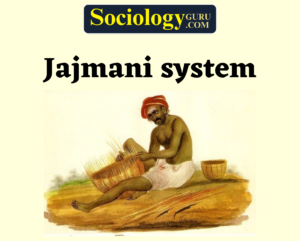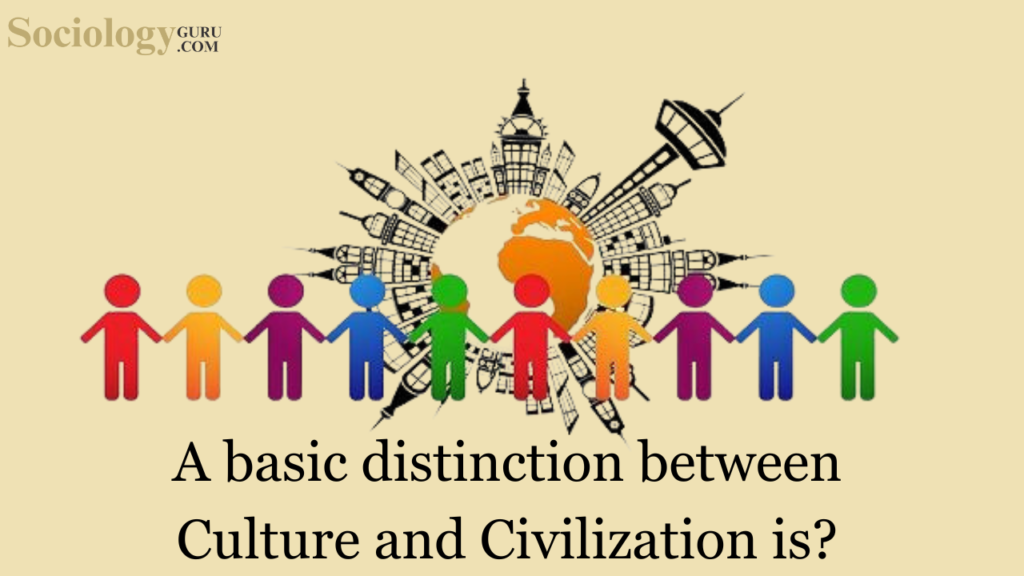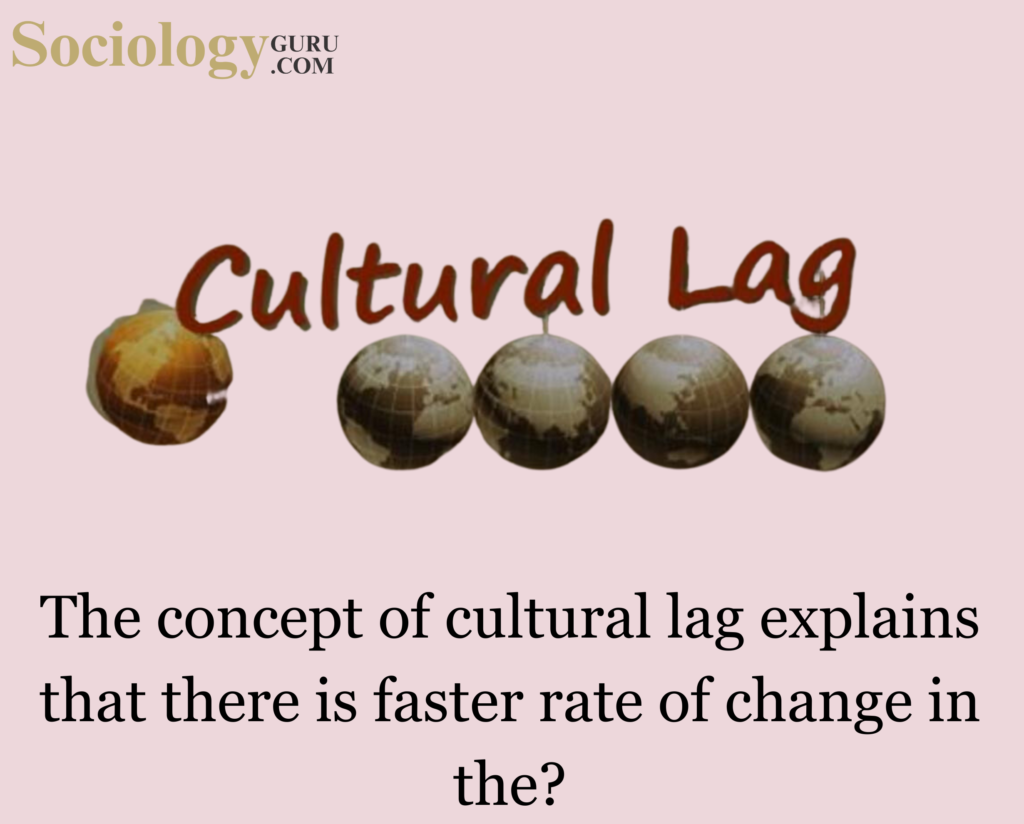Question: Jajmani system is a
- Political system
- Economic system
- Socio-cultural system
- All the above
Answer: (2)The Jajmani System: An In-depth Exploration of a Socio-Economic FrameworkThe Jajmani system, also known as the Yajman system, represents a distinctive socio-economic structure deeply embedded in the traditional fabric of villages in the Indian subcontinent. This intricate system has historical roots, primarily observed in rural communities, where it played a crucial role in shaping economic interactions, social hierarchies, and cultural practices. To comprehend the essence of the Jajmani system and its multifaceted nature, it is imperative to explore its historical evolution, functional aspects, and its impact on the socio-cultural dynamics of traditional Indian villages. Historical Evolution:The origins of the Jajmani system can be traced back to ancient times, with its roots firmly entrenched in the hierarchical structure of the caste system prevalent in Indian society. The term “Jajman” refers to the patron or employer, while the term “Kamin” designates the service provider or artisan. This system evolved over centuries, shaping and being shaped by the socio-cultural and economic milieu of rural life. Functional Aspects:The Jajmani system operates on the principle of reciprocal relationships between different caste groups within a village. Each caste is assigned specific roles, responsibilities, and occupations, creating a web of interdependence. The system involves the exchange of goods and services, with lower castes providing various functions for upper castes in return for essentials such as grain or other goods. The economic dimension of this system is significant, as it contributes to the self-sufficiency of villages. Economic Dimensions:In terms of economic functionality, the Jajmani system delineates occupational roles based on caste distinctions. Different castes are assigned specific economic functions, such as agriculture, artisanal work, or services. The products and services exchanged include agricultural produce, crafts, and other goods essential for the sustenance of the community. This economic interdependence fosters stability within the village economy. Socio-Cultural Significance:The Jajmani system is not confined to economic transactions alone; it intricately weaves into the socio-cultural tapestry of traditional Indian villages. It establishes a social hierarchy based on caste, where each caste group plays a unique role within the community. This hierarchical structure is not only economic but also extends to social norms, rituals, and interactions. The Jajmani system thus becomes a crucial component of the social structure, defining relationships and responsibilities. Ritualistic Practices:Beyond economic and social aspects, the Jajmani system carries significant ritualistic and religious undertones. Interactions between patrons and service providers often involve religious ceremonies, festivals, and rituals. These practices contribute to the preservation of cultural identity and reinforce traditional values within the community. The system becomes a means through which cultural and religious practices are transmitted across generations. Challenges and Transformations:While the Jajmani system has been instrumental in fostering economic stability and social order in rural communities, it is not without challenges. The rigid caste-based division of labor can perpetuate social inequalities and limit opportunities for upward mobility. Moreover, the system has faced challenges due to changing socio-economic dynamics, urbanization, and educational advancements. As India undergoes transformations, the Jajmani system has experienced adaptations and, in some cases, erosion. Contemporary Relevance:In contemporary times, remnants of the Jajmani system persist in certain rural areas, adapting to the evolving needs of communities. However, the system’s influence has diminished in the face of broader social, economic, and educational changes. Understanding the historical context and functional aspects of the Jajmani system remains crucial for comprehending the socio-cultural dynamics of traditional Indian villages. Conclusion:The Jajmani system, with its intricate web of economic, social, and cultural relationships, stands as a testament to the historical and cultural richness of traditional Indian villages. While it has played a crucial role in sustaining rural communities, it has also faced challenges and transformations in response to broader societal changes. The system’s historical significance and contemporary adaptations offer valuable insights into the complexity of socio-economic structures in traditional societies. Studying the Jajmani system provides a lens through which one can explore the dynamic interplay between tradition and change in the rural landscapes of the Indian subcontinent. |
Take a Quick Sociology Quiz to measure your Performance
Frequently Asked Questions:
1. Question: Define the term “ethnic movement” and provide an example from India.
Answer: An ethnic movement refers to a collective effort by a group sharing common cultural, linguistic, or religious traits, seeking to assert their identity and rights; an example from India is the Khalistan Movement in Punjab.
2. Question: Identify the main objectives behind the Gorkhaland ethnic movement.
Answer: The Gorkhaland ethnic movement primarily seeks to establish a separate state for India’s Nepali-speaking population in the Darjeeling region, advocating for linguistic and cultural recognition and political autonomy.
3. Question: What was the Operation Blue Star, and which ethnic movement was it related to?
Answer: Operation Blue Star was a military action in 1984, aiming to remove Sikh militants hiding in the Golden Temple in Amritsar; it is related to the Khalistan movement, which sought a separate Sikh country.
4. Question: Mention a critical factor that triggered the emergence of ethnic movements in India, as discussed by Dipankar Gupta.
Answer: Dipankar Gupta emphasized that ethnicity is fundamentally a political process, wherein caste and religion, the key components of identity formation, are politicized by leaders for vested interests.
5. Question: What were the primary reasons for the Assam Ethnicity conflicts involving Bodo tribals and Bengali Muslim settlers?
Answer: The Assam Ethnicity conflicts primarily stemmed from issues related to immigration, land rights, and resource allocation, leading to clashes, riots, and evolving relationships among indigenous communities to address challenges.
6. Question: Briefly describe the role of the Dravidian Movement in terms of caste and societal structure.
Answer: The Dravidian Movement, led notably by E.V. Ramasamy, aimed to establish an egalitarian society, focusing on anti-Brahmanism and advocating for equal rights for backward castes, while also introducing reforms like self-respect marriages.
7. Question: Name the prominent ethnic movements in North-East India and specify one common objective.
Answer: Prominent ethnic movements in North-East India include the Nagas’ and Mizos’ struggles; a common objective was to gain autonomy and recognition for their distinct tribal identities and cultural uniqueness.
8. Question: What is the key argument of Gail Omveldt regarding traditional Indian society and multiculturalism?
Answer: Gail Omveldt opposed romanticizing traditional Indian society, arguing that hierarchy has always dominated it and dismissing the notion that multiculturalism is an intrinsic feature of Indian society as a myth.
9. Question: Briefly explain the social hierarchy factor as a contributing element to ethnic movements as suggested by Olzak.
Answer: Olzak suggests that the construction of hierarchies among ethnic communities, which often leads to the suppression of one group by another, is a key factor that can instigate social and ethnic movements.
10. Question: Identify one consequence of the unequal economic development factor within the context of ethnic movements in India.
Answer: One consequence of unequal economic development is the marginalization and underdevelopment of certain groups, leading to feelings of alienation and sometimes initiating ethnic movements as these groups strive for equality and recognition.
To master these intricacies and fare well in the Sociology Syllabus, aspiring sociologists might benefit from guidance by the Best Sociology Teacher and participation in the Best Sociology Coaching. These avenues provide comprehensive assistance, ensuring a solid understanding of sociology’s diverse methodologies and techniques.
META TAGS:
Why Vikash Ranjan’s Classes for Sociology?
Proper guidance and assistance are required to learn the skill of interlinking current happenings with the conventional topics. VIKASH RANJAN SIR at SOCIOLOGY GURU guides students according to the Recent Trends, making him the Best Sociology Teacher for Sociology.
At Sociology Guru, the Best Sociology Coaching platform, we not only provide the best study material and applied classes for Sociology but also conduct regular assignments and class tests to assess candidates’ writing skills and understanding of the subject.
Choose The Best Sociology Teacher for your Preparation?
To master these intricacies and fare well in the Sociology Syllabus, aspiring sociologists might benefit from guidance by the Best Sociology Teacher and participation in the Best Sociology Coaching. These avenues provide comprehensive assistance, ensuring a solid understanding of sociology’s diverse methodologies and techniques. Sociology, Social theory, Best Sociology Teacher, Best Sociology Coaching, Sociology Syllabus.
Best Sociology Teacher, Sociology Syllabus, Sociology, Sociology Coaching, Best Sociology Coaching, Best Sociology Teacher, Sociology Course, Sociology Teacher, Sociology Foundation, Sociology Foundation Course, Sociology CUET, Sociology for IAS, Sociology for UPSC, Sociology for BPSC, Sociology for UGC NET, Sociology for JPSC,
Follow us :
KEYWORD:-Jajmani system, Jajmani system, Jajmani system, Jajmani system, Jajmani system, Jajmani system, Jajmani system, Jajmani system, Jajmani system, Jajmani system, Jajmani system, Jajmani system, Jajmani system, Jajmani system, Jajmani system, Jajmani system MA CUET SOCIOLOGY



